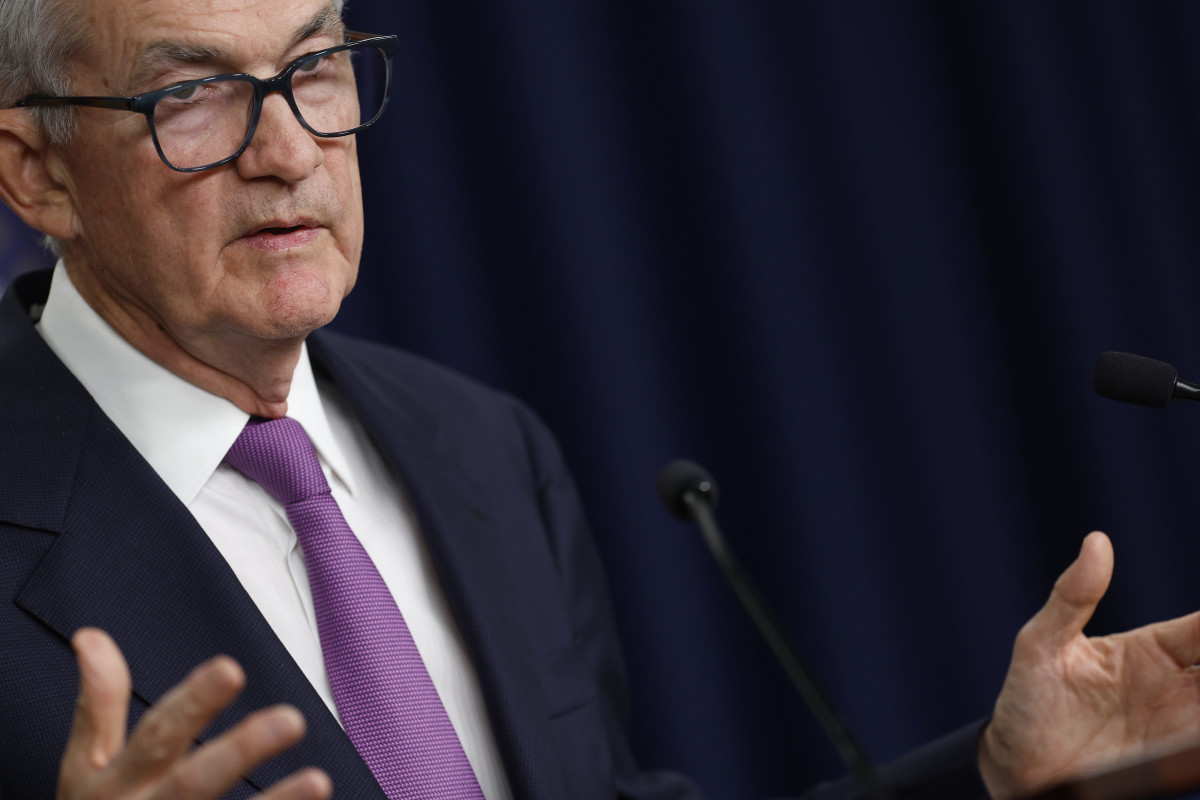
U.S. stocks are looking to power into the final weeks of the year on the back of one of the best November rallies on record.
Many analysts are citing the likelihood of early-2024 Federal Reserve interest-rate cuts as the dominant driver of sentiment.
But others note a series of developments in financial markets — including a muted reading for key volatility gauges and the recent price spikes in gold and bitcoin — that suggest that even if the Fed isn't inclined to cut rates early next year, stocks are still set for solid gains.
The S&P 500 has rallied nearly 12% since the broadest measure of U.S. shares bottomed out on Oct. 27 with the lowest closing level since May. The rally was powered in part by comments from Fed Chairman Jerome Powell to the Economic Club of New York that suggested the central bank's rate-hiking cycle was coming to an end.
Powell cited slowing inflation risks and a surge in Treasury bond yields, which kept lending conditions tight and acted as a break against unhelpful credit growth in the world's biggest economy as the key factors.
S&P 500 rally outpaces Big Tech
Since then, bond markets have enjoyed one of their best monthly rallies since the global financial crisis. Benchmark 10-year notes fell more than 75 basis points, or 0.75 percentage point, to current-day levels of around 4.25% as traders lined up to bet on when the Fed would first cut rates and how many times after that it would follow up with similar reductions.
Despite pushback from the Fed, the lower yields and the rate-cut prospects also triggered a 3.1% decline for the U.S. dollar index, which tracks the greenback against a basket of six global currency peers.
Collectively, the moves helped the broader S&P 500 rally, which, it must be noted, outpaced gains for the so-called Magnificent Seven megacap tech stocks (Apple, Microsoft, Google, Amazon, Tesla, Nvidia and Meta Platforms) over the same period.
A simplified version of the S&P 500, which discounts the fact that those seven stocks comprise around 30% of the main benchmark's weight, is up 12.3% since Oct. 27. This suggests investors aren't just riding the momentum of Big Tech but are also finding value in a broader collection of stocks.
That could reflect the market's increasingly bullish outlook for earnings, which the FactSet consensus sees rising 11.4% next year to $246.30 per share. That pace would mark the strongest year-on-year gains since the group started tracking the data in 1996.
Related: Recession is a long way off, and that means Fed rate cuts may be as well
A host of factors blend into the improved earnings outlook, argues the Bank of America equity strategist Savita Subramanian. These include the tailwind of a weaker U.S. dollar, an economy that is slowing but likely to avoid recession while still growing corporate profits, and the likely boost from the presidential election campaigns.
Subramanian also notes that at this stage of a bull market, investors are typically starting to show signs of reckless, or at least over-enthusiastic, behavior.
Fund managers cautious despite global rally
Heading into the final months of the year, however, global fund managers have the lowest long-term earnings-growth forecasts in nearly four decades (outside of the global pandemic). They hold a conservative position that is underweight historic averages for stocks.
"At this point, the Fed has done the hard work, the earnings recession is likely behind us, we see early signs of productivity gains, reshoring, bipartisan support for US manufacturing, consumer resilience and remarkable adaptation by corporates," said Subramanian.
Her price target for the S&P 500 by the end of next year is 5000, a 10% advance from current levels.
"The market has absorbed significant geopolitical shocks already and the good news is we’re talking about the bad news," she added. "Macro signals are muddled, but idiosyncratic alpha increased this year. We’re bullish not because we expect the Fed to cut but because of what the Fed has accomplished."

Gold and bitcoin prices point to Fed rate cuts
Interestingly, gold prices – which hit a fresh all-time high of $2,135 per ounce in overnight trading, extending their two-month rally to around 17.2% – point to aggressive Fed rate cuts next year.
Surging bitcoin prices — which last night topped $41,000 for the first time in more than 19 months, marking a 50% advance since early October — carry a similar suggestion.
Both moves indicate a market that is growing increasingly comfortable with risk, even in the face of fading economic forecasts and the Fed's "higher for longer' rate messaging.
They're also being supported by the continually muted levels of market volatility, as measured by the CBOE Group's VIX index, which is trading nearly the lowest levels since early June.
The VIX, when pegged at its current level of $13.39, suggests traders are looking for daily prices swings in the S&P 500 of just 0.84%, or 39 points, each day for the next 30 days.
Good reminder that a "low VIX" is a normal part of bull markets.
— Ryan Detrick, CMT (@RyanDetrick) December 3, 2023
Investors seem to always forget this. https://t.co/19vhp6nLRs
Bank of America's Subramanian argues, however, that stocks should be rallying despite the bets on Fed rate cuts, not because of them. That's given that "history suggests a Fed easing cycle accompanied by a credit tightening cycle has been the worst environment for stocks – i.e. recession."
"The bulls should hope for an improving economy, resulting in an easing credit cycle, rather than a dovish Fed driven by a weaker economy," she said.
Oil-price slump adding to bull thesis
Oil prices are also moving lower, supporting a bullish stock-market thesis, helped in part by record U.S. production and by a chaotic series of OPEC meetings last month that failed to result in a conclusive agreement on output cuts.
U.S. crude prices have fallen around 20% since its early October peak of $91 a barrel. That's helped domestic U.S gasoline prices fall around 15% over the same period to a national average of around $3.243 per gallon, according to AAA data.
December will provide a key test to the market bulls, but given its place as one of the strongest months of the year for U.S. stocks, November's gains have a good chance of extending into the end of the year.
"Given the Santa Claus rally axionym, it’s perhaps not surprising that the stronger returns in December have typically been seen in the second half of the month," said George Smith, portfolio strategist at LPL Financial in Charlotte.
"Based on all the periods studied since 1950, the second half of December was significantly stronger than the first half," he added. "Stocks were flat or even fell in value on average during the first half of the December, before, on average, rallying in the second half of the month."
Of course, the real work after that starts in early January, when Wall Street's biggest banks kick off fourth-quarter-earnings season.
LSEG data sees collective S&P 500 profits rising 5.4% from the same period a year earlier to a share-weighted $458.5 billion. The rate improves to around 8.3% when the volatile energy sector is removed.
- Action Alerts PLUS offers expert portfolio guidance to help you make informed investing decisions. Sign up now.







